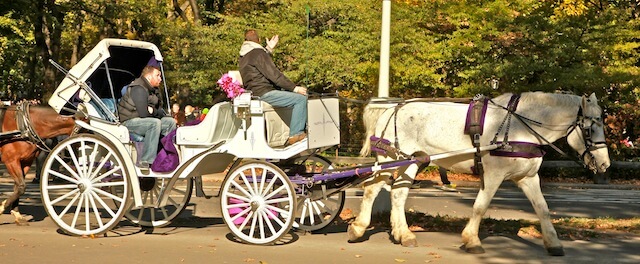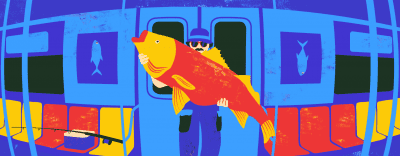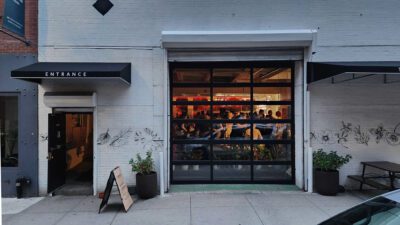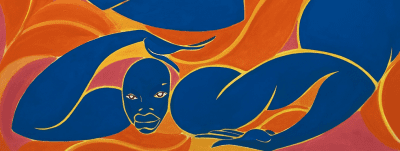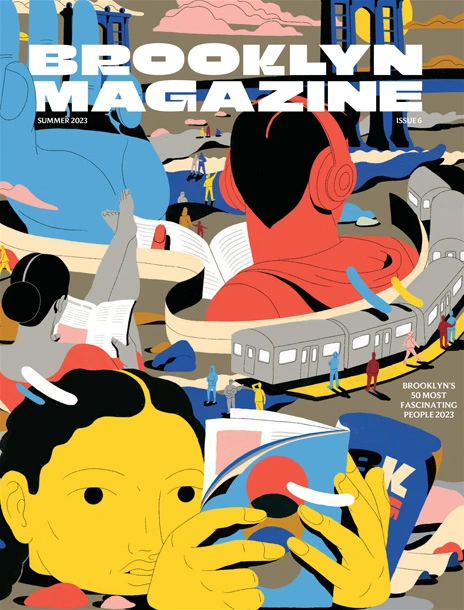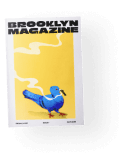In Defense of New York’s Carriage Horse Industry
Yesterday, we posted an editorial against the carriage-horse industry in New York City. Today, we publish a response by Christina Hansen, who has been driving carriages for eight years and is the cofounder of Blue Star Equiculture, a draft horse sanctuary.
Henry Stewart sets up the carriage horse debate as being between drivers concerned about jobs and activists worried about the welfare of animals. That’s a false dichotomy. It’s the carriage drivers who are concerned, first and foremost with the welfare of the horses. The activists are interested in anything but welfare—whether it be animal rights, or their own psychological “rescue dramas,” or, yes, politics and real estate.
Carriage drivers are carriage drivers because we love horses. And our primary job duty is to tend to the welfare of the horses in our charge. Every day I go to work with one of the half-dozen carriage horses I drive on a regular basis: Billy, Oreo, King, Tyson, Sarah, Tickles. Those horses each have their own personalities and quirks. They are not interchangeable machines. Of course they are “sentient” beings, and their behavior and attitudes indicate that they are generally happy in their work. We couldn’t work together if they weren’t.
Working with horses requires sensitivity and empathy, to understand the horse, and to work with the horse in partnership. Horses are very large, very powerful animals, and brute force will not work in getting a horse to decide to work with the humans in their lives. That’s why horsemanship is often called an art.
I have driven carriage horses since 2006: first in Philadelphia, and now in New York City. That’s still a fraction of the time that many of my coworkers have been driving carriage horses. Stewart claims that we don’t need carriage horses any more. One might say we also don’t need dogs or cats. We don’t need art or music. We don’t need Central Park. I would argue that we do in fact need those things, even if they are not necessary to survival. These are the things that make us human.
Horses helped us build our civilization. Until the middle of the 20th century, horses were everyday partners in our lives. How quickly many people have forgotten. When I first started driving a carriage in Philadelphia, people would come up to us carriage drivers and ask, in all sincerity, “How do you keep a horse in the city?” Our answer: “The same way we’ve been keeping them here since 1682.” Why does it surprise people that horses are urban animals? They’ve always been here. Is it the false narrative of “progress”?
My first week on the job, a motorist rolled down her window and screamed “animal cruelty” at me. It stunned me. I grew up in Lexington, Kentucky, where horses are a part of the culture. It had never occurred to me that anyone could look at a healthy, well-cared for horse walking down the street, pulling a lightweight carriage and think that that was in any way “cruel.”
This is how I came to learn about the animal “rights” movement. Animal rights is not animal welfare. It is the belief that humans do not have the right to use animals in any way. Animal rights activists believe that carriage drivers are “exploiting” horses by making money off their labor, as opposed to animal welfarists, who acknowledge that carriage horses and their owners have a mutually beneficial partnership. Animal rights activists assume that all human interaction with animals contains a possibility of abuse and therefore all animal interaction should be banned. It’s a distorted way of looking at animals, and at looking at ourselves. And it’s unhealthy.
We need animals among us. Animals teach us compassion. They teach us about other ways of experiencing the world than our own human one. For many people, the only opportunity they will have to interact with a horse or learn about a horse first hand is on 59th Street, at the carriage horse line. This utter ignorance about horses, that I encountered in Philadelphia and have since encountered in New York and on the Internet, is the reason that I started Blue Star Equiculture, a nonprofit draft horse sanctuary in Palmer, MA, cofounded with my friend and fellow carriage driver Pamela Rickenbach.
At Blue Star, we believe that the real solution to the homeless horse crisis and to problems of neglect or slaughter of horses is to find more ways to bring horses into our lives, whether to use them for organic farming, environmentally friendly logging, or carriage rides. Horses that are a part of the community—in parades, in wagon rides, in civic clean up days—are horses that the community cares about. When the community cares about its horses, horses fare better.
This is certainly the case with the New York City carriage horses. They work on Central Park South, one of the busiest streets in the world. They are a symbol of the city. As a result, they are protected by regulations, their owners and the public. I was glad to see the New York Daily News use the hash tag #SaveOurHorses to launch their pro-carriage petitioning campaign. It’s exactly right. The carriage horses don’t just belong to their owners, but to all New Yorkers. They belong to the autistic girl from the Upper East Side who’s condition is really only manageable thanks to her interaction with the carriage horses and the therapeutic rides she takes. They belong to Norm, a resident of Central Park South, who has been standing in Columbus Circle for several hours multiple days a week with a pro-carriage-horse sign supporting our business, just because he likes them and likes seeing them outside his living room window. They belong to the overwhelming majority of New Yorkers who want the horses to stay. The horses belong to all of us. And no person has the right to take them away.
Stewart puzzles at the New York Daily News‘ enthusiasm for saving the New York City carriage horses. The reality is that the New York Daily News has been reporting on this issue for years now. They have been to the stables. They have investigated what life is like for carriage horses and for less-fortunate horses that don’t have jobs. They have caught anti-carriage-horse activist groups like NYCLASS and PETA in lie after lie after lie. The Daily News knows that there is no comparison to be made between people like me who drive carriage horses in New York City and people who club baby seals. We in the carriage industry are the ones who are saving horses—we are the ones who are preserving the necessary bond between horses and people. We are the ones giving horses the care that they need.
The photo that Stewart has posted is of Charlie, who died suddenly of unknown causes—most likely a heart attack or stroke—in October 2011. The ASPCA, acting outside the procedures set forth in the administrative code, coerced the owner to sign over custody of Charlie’s carcass. The ASPCA, which cofounded NYCLASS and advocates for the abolition of carriage horses, was also at the time the designated enforcement agency over the carriage industry. Despite the ASPCA’s obvious bias, the ASPCA never found any evidence of cruelty, abuse or neglect in the carriage industry. Yet in the case of Charlie, they pressured their vet, Dr. Pamela Corey, to say that Charlie had suffered and was in pain and that being a carriage horse had killed him. None of this was true, and Dr. Corey eventually recanted her statement—but only after it had gone around the world on social media. For fulfilling the responsibilities of having a veterinary license and telling the truth, Dr. Corey was suspended and eventually fired from the ASPCA. The final necropsy report for Charlie showed that he had been in excellent physical and nutritive health. Charlie could have dropped dead anywhere, in a field or on 54th St.
The photo of Charlie is emblematic of so much that is wrong with the anti-carriage-horse crusade. Conflict of interest, animal rights zealotry blinding alleged professionals to the truth that the carriage horses are healthy, and groups like the ASPCA who are supposed to be interested in the welfare of animals throwing aside their responsibility to tell the truth in favor of partisan politics for animal rights.
Stewart has also linked to a BuzzFeed article filled with repetitive photos of the same handful of carriage accidents (and where most of the horses suffered only minor injury, but where the photos are disturbing). Those incidents date back over many years. Every year hundreds of people are killed by car crashes in New York City. Thousands are maimed. Yet there is, thankfully, a taboo against showing photos of such events. There is no such prohibition against showing photos of dead or injured horses. The anti-horse activists seem to fetishize these violent and disturbing images and show them over and over to inflict psychological distress in the viewer, in a perverse effort to shock the viewer into taking up their anti-carriage-horse position.
Knowing how rare carriage collisions and horse deaths are, and knowing the true story behind Charlie’s death from natural causes and the exploitation of his death by anti-carriage-horse activists, how can you justify it? How can you justify continuing to use a photo of what happens in life, through no fault of anyone, to traumatize over and over again the viewer?
You might also like 









